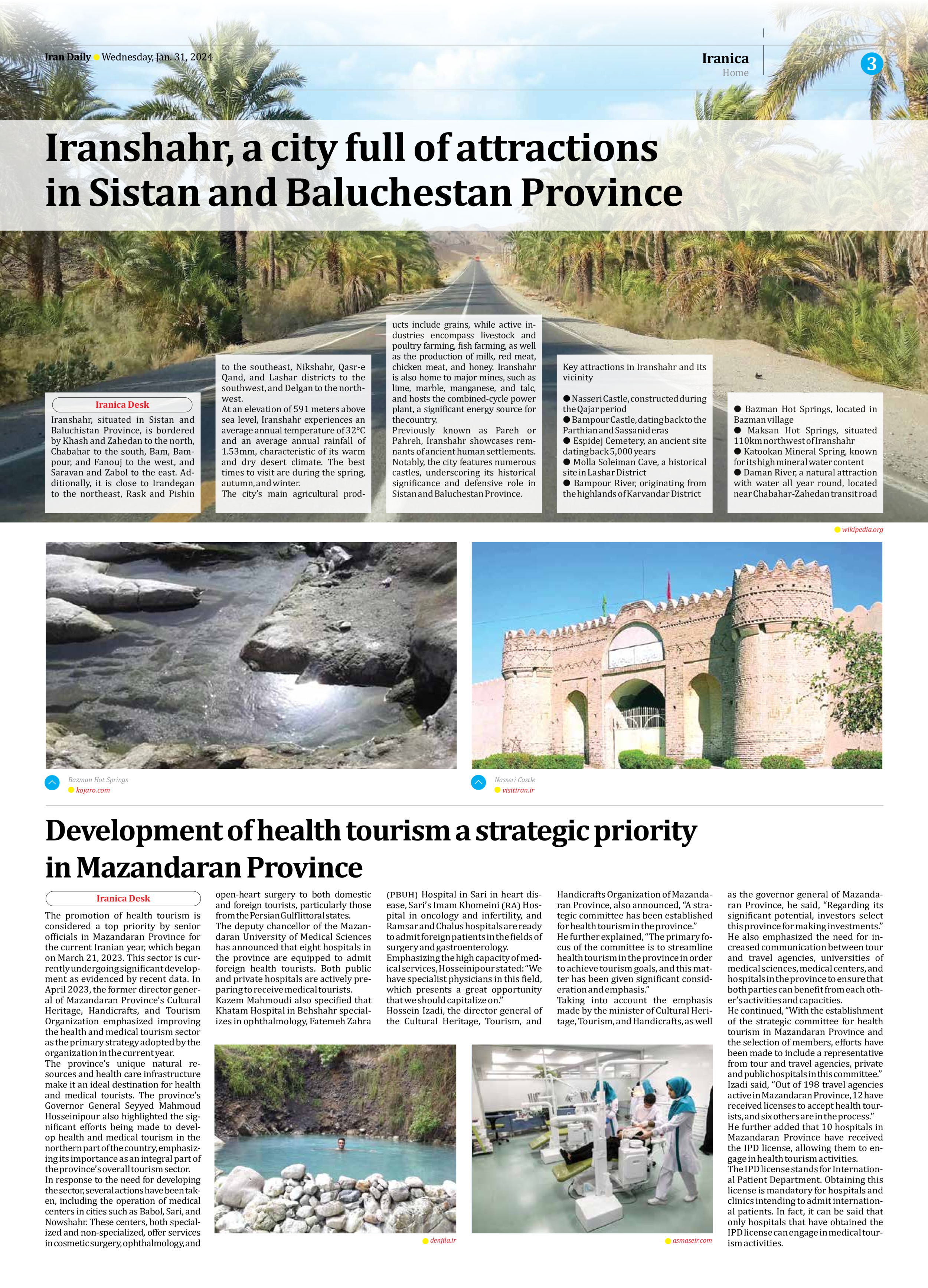
Iranshahr, a city full of attractions in Sistan and Baluchestan Province
Iranshahr, situated in Sistan and Baluchistan Province, is bordered by Khash and Zahedan to the north, Chabahar to the south, Bam, Bampour, and Fanouj to the west, and Saravan and Zabol to the east. Additionally, it is close to Irandegan to the northeast, Rask and Pishin to the southeast, Nikshahr, Qasr-e Qand, and Lashar districts to the southwest, and Delgan to the northwest.
At an elevation of 591 meters above sea level, Iranshahr experiences an average annual temperature of 32°C and an average annual rainfall of 1.53mm, characteristic of its warm and dry desert climate. The best times to visit are during the spring, autumn, and winter.
The city’s main agricultural products include grains, while active industries encompass livestock and poultry farming, fish farming, as well as the production of milk, red meat, chicken meat, and honey. Iranshahr is also home to major mines, such as lime, marble, manganese, and talc, and hosts the combined-cycle power plant, a significant energy source for the country.
Previously known as Pareh or Pahreh, Iranshahr showcases remnants of ancient human settlements. Notably, the city features numerous castles, underscoring its historical significance and defensive role in Sistan and Baluchestan Province.
Key attractions in Iranshahr and its vicinity
● Nasseri Castle, constructed during the Qajar period
● Bampour Castle, dating back to the Parthian and Sassanid eras
● Espidej Cemetery, an ancient site dating back 5,000 years
● Molla Soleiman Cave, a historical site in Lashar District
● Bampour River, originating from the highlands of Karvandar District
● Bazman Hot Springs, located in Bazman village
● Maksan Hot Springs, situated 110km northwest of Iranshahr
● Katookan Mineral Spring, known for its high mineral water content
● Daman River, a natural attraction with water all year round, located near Chabahar-Zahedan transit road







